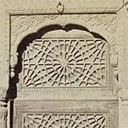0308 The Designed Object and Its Imperial Histories: On T.N. Mukharji and the "Art-Manufactures of India"
Identifiers (Article)
Abstract
This essay locates a late 19th-century category of objects variously named as 'industrial' or 'decorative arts' within the specifically imperial institutional circuit of the World Exhibitions. Taking up a segment of the World Exhibitions of the 1880s, it traces a history which connects the three cities of Calcutta, London and Glasgow and creates a trail of travelling exhibits and museum collections of this most proliferating category of objects. It follows in particular the career of the Bengali exhibition commissioner and museum curator Trailokya Nath (T.N.) Mukharji and the anthology he compiled on the Art-Manufactures of India for the Glasgow International Exhibition of 1888 to map a specific network of commissioning, collecting, cataloguing and documenting India’s 'art-manufactures'.
Statistics


License

This work is licensed under a Creative Commons Attribution-NonCommercial-NoDerivatives 4.0 International License.



